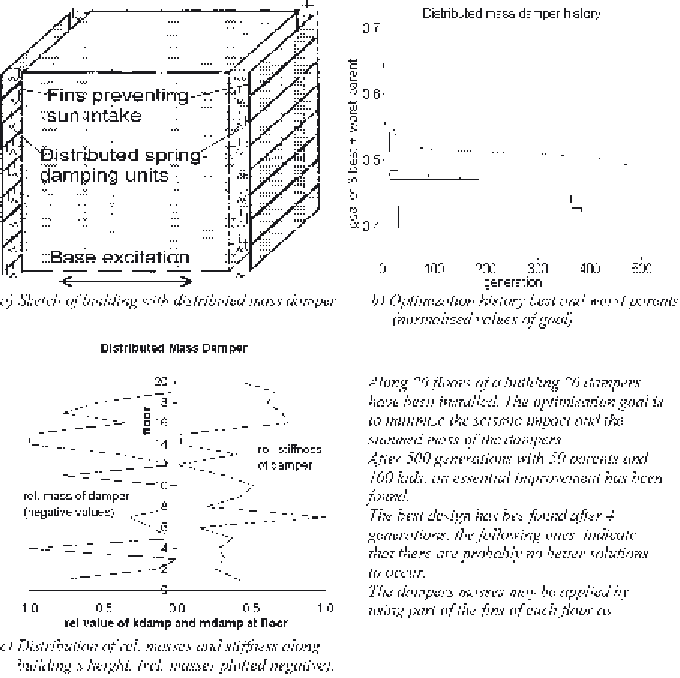Geology Reference
In-Depth Information
the maximum deflection of a compensator. Some
cycles help to collect a basic experience. This
experience can be used to find satisfactory results.
Combined fitness functions using e.g. the
damage impact, the compensators mass and the
maximum deflection as contributions work here
as well:
Figure 7a presents a sketch of building with
distributed compensators along the height of a
building following Fu and Johnson (2009). The
main advantage of this approach is not to introduce
additional masses into the edifice but to use the
fins preventing the sun radiation for the seismic
control as well. In contrary to the original active
design of Fu and Johnson (2009), we use pas-
sive compensators. In our example 20 floors are
equipped with such double acting fins. We may
use only part of the absorber of each floor as
compensator mass. The optimisation now takes
place in a combined way as proposed by Equation
(33), where the relative weighting for the mass
and the energy in the combined objective is
w
2
=
w
1
after scaling both unit mass and unit energy to
z p p
(
,
, ...
p
)
=
w z p p
(
,
, ...
p
)
+
1
2
n
1 1
1
2
n
w z p p
(
,
, ...
p
)
+
w z
(
p p
,
, ...
p
n
)
+
....
2 2
1
2
n
3 3
1
2
(33)
A well known problem is the definition of
the relative weighting factors
w
i
, which may be
avoided when using subsequent optimisation
steps, switching old objectives into constraints.
Figure 7. Building with distributed compensators

Search WWH ::

Custom Search